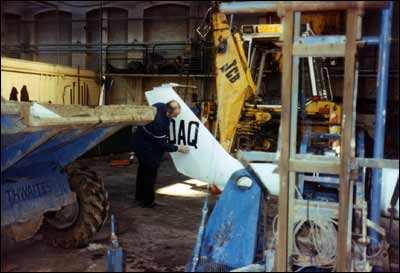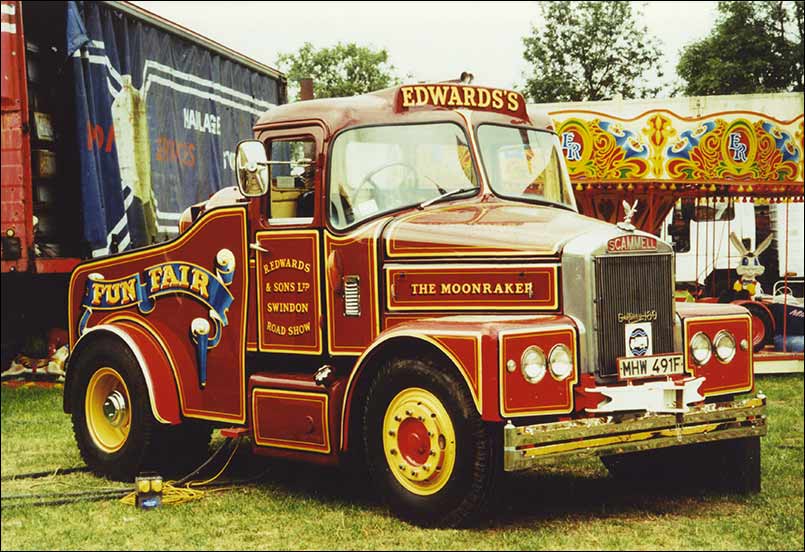|
|
||||||||||||||||||||||||||||
| Article by Kay Collins from conversations with Clive, July 2008 |
||||||||||||||||||||||||||||
|
Clive Wood - signwriter
|
||||||||||||||||||||||||||||
| Interests - local history, country houses, heraldry, woodcarving, collecting and local politics. District Councillor, ENC. Chairman 1984-85, Rushden Town Councillor, Mayor 2001/2. Founder member of Rushden Amenities Society Hon.sec. for 36 years, supports National Trust, Norfolk Ornithologists, CPRE. Only son of Harry William and Joan (nee Muscutt). (extract from the book on Tennyson Road Boys' School - 2003) | ||||||||||||||||||||||||||||
|
Mrs Bailey was the schools employment officer and she tried to match pupils with employers. She knew Jack Ashley of Wellingborough and although he had not previously thought about taking on an apprentice, he agreed to see Clive and took him on with a start wage of £1 per week. Jack Ashley had a workshop in College Street, Wellingborough – it had been Billy Norman’s old bakehouse. Jack was a door-to-door salesman before the war and learnt his signwriting trade in the army. When he was demobbed he decided to set up in the business. “We used to prepare the weekly posters for the Ritz and Palace Cinemas at Rushden, the Regal and Palace at Wellingborough. Mostly they were 20” by 10” but sometimes we did long ones – 22” wide and up to about 5 feet long – on wallpaper – the sort used for lining walls.” Other work was for the local Operatic Societies and Carnivals; this included 8’x 4’ boards to advertise the coming events. They were wired to fences around the towns, usually six of them. “One of my other jobs in that first year was to cut up wood and make sticks for Mrs Ashley. Jack had painted the appeal board for the rebuilding fund for St Barnabas Church which had been destroyed by fire. It was a large board made of tongue and groove slats, and now the appeal was over. I was to take it apart and cut each slat into lengths and then chop it into sticks. One week Mrs Ashley came to ask me to please make them a little thicker as they were burning away rather too quickly! She was a very kindly lady.” Carnival floats were a seasonal line, one float a year was for Antona Leathers for an “illuminated carnival” at St Neots. The County Show at Overstone Park had 6 large boards (about 6’ x 4’) each with a map of the showground – with a “you are here” marker. Occasionally a vehicle would be painted with company logos; for H W Chapman, Weetabix or Whitworths. Some of the regular contracts were for posters for dances at the Drill Hall and Gloucester Hall in Wellingborough, mainly for the Operatic Society. Jack and Clive would drape muslin across the ceilings at the Drill Hall (to hide steel beams) and put up boards painted with a theme to dress up the room. Another contract was for signwriting coffin plates for Barratts and for Bruce Carter, both of Wellingborough. These were wooden ones for cremations and metal for burials. “I still do an occasional coffin plate today – I did one for Mrs. Abbott last year”. There was another man in Wellingborough – Eric Cobb – who was a painter and decorator by trade, but would sometimes do shop facia boards and so he branched out into signwriting. There was some rivalry between him and Jack, but Jack was a specialist. Jack retired when Clive had been with him for fifteen years, and now self-employment was felt to be the right choice. Two of the earliest contracts that Clive got were for Garden Care Contractors at Podington and Deejak builders, and they are still clients today. Ken Joyce, the wrestler started a promotions company when he retired from wrestling himself, and Clive did the posters on special fluorescent paper – these were for events all over the Midlands and East Anglia. The biggest contract was with Marriott’s builders in Rushden. It was 7 days a week. They would buy 6 vans at a time, 3 panels on each, and 2 coats so the logo and wording was painted 36 times. Large boards 8’ x 4’, contract boards and advertisement boards were also part of that contract. Sometimes they were 18’ x 12’ and it took six men to lift them. “I had to use scaffolding to do the painting”. Marriott’s did a big job at Woburn Abbey and Clive was introduced to them and won a contract there. He did “as and when” work in the house as well as signs around the wild life park. One sign was done on a paving slab as it was to be placed inside the animal enclosure. On another occasion there, Clive remembered doing some work inside the silver display vaults – he had to be locked inside! In the sculpture gallery he painted lines around the ceiling which gave the appearance of mouldings but it was completely flat. The room had been scaffolded and a huge floor laid on top, to enable the whole ceiling to be painted. “I was pleased as I don’t like heights and won’t work from a ladder! My proudest moment there, was when Lady Tavistock gave me her congratulations for a board I had worked on for the courtyard – that was gold leaf work.” For twenty years he updated the Honours Boards for Rushden Golf Club. One of the earliest names on the Ladies Captain board was Mrs Sartoris, in about 1930. That board has since been destroyed. Another long contract, also about 20 years, was with Wellingborough School, to do the Honours Boards in the school, various houses, and the sports pavilion. Sadly the latter was destroyed in a fire. Honours Boards for Diamonds Football Club, Colworth Golf Club, Kettering Bridge Club, Wellingborough Rugby Club, Rushden Bowls Club, Rushden & Higham Ferrers Rugby Club were also entrusted to Clive for varying periods. The biggest single job that Clive has ever undertaken was for Whitworths. Jack Ashley’s son was head of the art department there, and when they purchased 6 new lorries, they wanted to have a picture of the new product 'Alpen' painted on both sides of each, so he contacted Clive to ask him to undertake the work. One of the few companies that continues to have signwriting on their vehicles, rather than the modern plastic stick on panels, is Deejak. The company presented Clive with a watch on his 60th birthday, in recognition of his faithful service for 25 years. Clive is a contractor, not an employee so this was a very proud moment for him. Another proud moment for Clive came in 1985 when, as Chairman of East Northamptonshire District Council, he met the Queen when she visited the Estates of the Duchy of Lancaster in the county. Today Clive is still working at Deejak, maintaining the honours boards at Kimbolton School, painting two new wooden shields each year for the Northamptonshire Bowls Assoction ‘Manfield Cup’ winners and runners-up, and many other ‘one off’ requests for signwriting are still keeping him busy. He is also a councillor, and was the Mayor of Rushden Town Council in 2000.
|
||||||||||||||||||||||||||||
|
|
||||||||||||||||||||||||||||
|
|
||||||||||||||||||||||||||||


